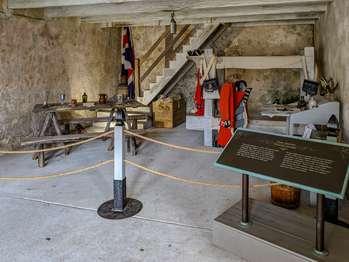Last updated: February 11, 2021
Place
The British Room

Historical/Interpretive Information/Exhibits, Wheelchair Accessible
This room shows you how the British remodeled eight of the casemates during their occupation of Florida from 1763 to 1784. Divided into East and West, Florida remained loyal to Great Britain during the American Revolution. During the war, St. Augustine's population nearly doubled as loyalists from Georgia and the Carolinas headed south for safety. Over 500 British soldiers were housed inside the Castillo. Many more were placed in the homes of local citizens.
